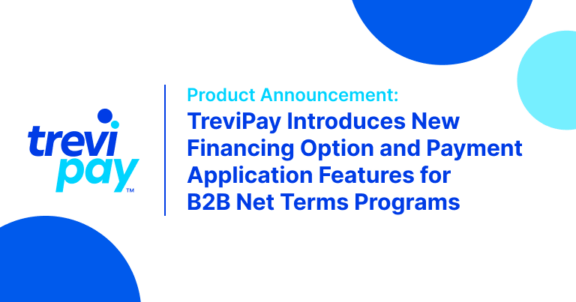News & Insights · Approx. 3 minute read
Navigating Supply Chain Pressures with Payments Technology

Supply chain issues aren’t going anywhere. Before the next holiday gifting season, companies can help ease supply chain pressures by re-assessing their B2B payments strategies to better handle cash flow, defend against fraud and meet customers where they are. Here are three ways to future-proof a B2B payments strategy:
1. Extend short-term financing solutions
The ongoing global supply chain disruptions are leaving many B2B retailers looking for new routes and suppliers, leading to a ‘trade gap’ of outstanding receivables. PYMNTS.com research shows that this gap is huge: estimated at more than $3.1 trillion per day.
With banks being more reluctant to take risks during the economic downturn, many traditional sources of funding have dried up. And, many of these vendors still don’t have much leverage when it comes to getting buyers to make timely payments, let alone have the power to set favorable terms. This financial environment results in disproportionate working capital and supply chain finance access, with larger suppliers generally doing better than smaller ones.
Credit cards are a familiar solution, but expensive fees and insufficient credit limits can be costly to doing business. Many B2B purchases are sold on Net 30 terms. In fact, 82% of B2B buyers would choose a vendor over others if that vendor offered invoicing at checkout with 30, 60 or 90-day terms. But, this is unfamiliar territory for companies that are new to taking all aspects of their business online. Plus, there are complications of underwriting and risks of debt which can be a limitation for many companies.
Engaging a strong payments solution partner can help manage these interactions by allowing companies to offer credit (or payment terms) to their buyers while sustaining working capital and removing unnecessary risk. This means that companies receive the benefits of extending credit terms without the burdens of debt collection. These solutions can do everything from underwriting and approving buyers for credit in under a minute as well as allowing for online invoicing at checkout.
2. Reduce uncertainty by fending off fraud
While eCommerce has seen online sales skyrocket, fraud has also increased. There is a growing risk of business identity theft and other forms of digital fraud as more customers are acquired online and globalization accelerates. More than 80% of organizations say they were the target of an attempted or actual payments fraud attack in 2019 according to the Association for Financial Professionals. In our online world, sophisticated fraud detection processes are critical to prevent companies from experiencing overwhelming losses to revenue.
Verifying customer identity when offering credit is another important consideration. Underwriting should include sufficient KYC and AML fraud detection processes. There must also be sustainable systems in place for accounts payable departments that can be scaled. Business email compromises (BEC) are among the most common forms of B2B payments fraud. This is when someone alters bank information on an invoice to redirect payments into the wrong account. Accounts payable departments must be armed with education and training on preventing BEC so that fraud is detected quickly and efficiently.
Determining what payment methods your company will accept is also pertinent. It is common knowledge that check payments may open your company up to fraud, but AFP reports that wire transfers, corporate/commercial credit cards, ACH debits and ACH credits are reported most susceptible to fraud attempts/attacks. Of course, it’s a delicate balance between preventing fraud and offering vendors the payments options they need.
3. Create experience loyalty with customers
The pandemic has made consumers value convenience more than ever. Shoppers demand a seamless online checkout experience, so it’s unsurprising that today’s B2B customers also want expedient, frictionless online payments. In Optimize Your Payment System to Seal the Deal, a study by Forrester, 93% of companies said they experience payment systems challenges that can negatively affect customer experiences and sales. It was reported that lengthy billing processes with multiple steps are the top challenge with current payment systems.
Read the entire article, originally posted on Customer Think.
Stay up-to-date with the latest from TreviPay
Thank you for subscribing! You will now receive email updates from TreviPay.



